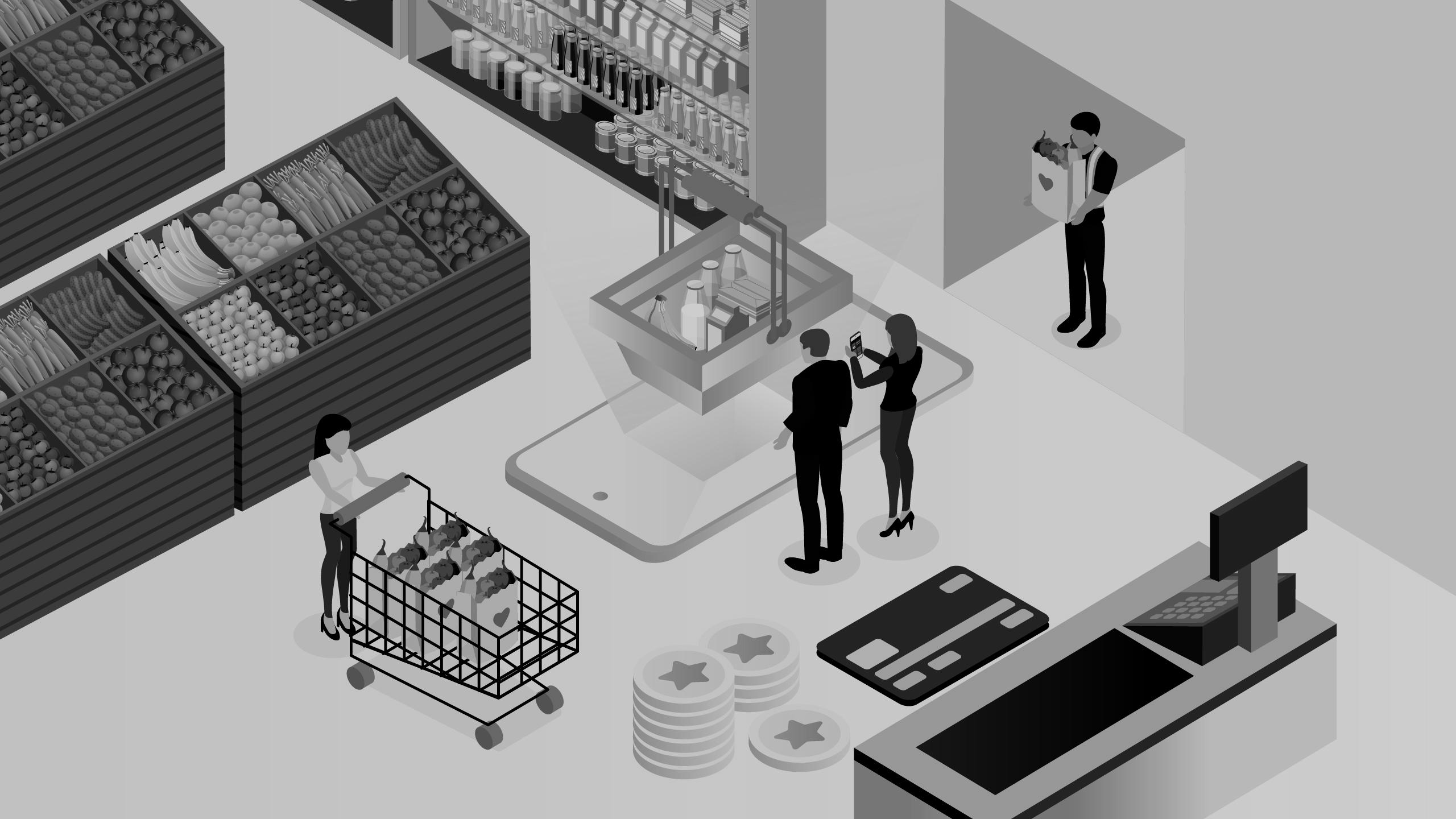
Navigating the Grocery Retailer Revolution: Adapting to Changing Consumer Demands
January 30, 2024
The grocery retail industry is in constant evolution, driven by changing consumer behaviours and preferences. When looking across these changes, three key trends emerge that continue to reshape the grocery retail landscape:
- The Broadening Definition of Health & Wellness
- Understanding Value – Price and Quality in Modern-Day Grocery
- Convenience Drives Innovation
The Broadening Definition of Health & Wellness
The grocery aisle is no longer just a place for picking up essentials; it has become a haven for the health-conscious consumer. The health and wellness category has become more than just a single aisle or shelf. It has evolved into an overarching staple that cuts across the entire store. Understanding how this evolution came to be is best told by retracing our steps.
Where this all started?
Early food guides facilitated a significant jump in education among Canadians on the benefits of a healthy diet. When the Canadian Food Guide was first published in 1942, it marked the first time certain food groups were publicly identified as being ‘better for you’. As the years rolled on and more research began to unveil the links between diet and various health issues among North American populations, the public’s interest in the relationship between their food choices and their health grew[1]. This led to a noticeable shift in consumer buying habits, with more and more people leaning towards healthier options during their regular grocery shopping trips.
How this has evolved?
For decades, health-conscious food movements, like the low-fat diet craze of the 80s, have been a driving force behind how shoppers perceive ‘better for you’ options in their local grocery store aisles. The digital age has amplified this, with an influx of readily available information sparking a surge in health trends as consumers discover connections between their diet and various health conditions. As this wealth of information continues to grow, and as new dietary trends and priorities emerge, grocery retailers will face the challenges of adapting to these niche preferences to stay relevant.
How retailers navigate this?
So, what’s the bottom line for retailers? It’s all about information and education. Today’s consumers are on the hunt for highly specific products and ingredients that align with their unique needs – the simpler it is to locate these items, the smoother the shopping experience. A prime example of this approach in action is the grocery retail chain, Metro. With their “My Health, My Choices” initiative, Metro has streamlined the process for customers to identify suitable food options by attaching badges to all their private label products, clearly indicating the specific dietary preferences each item caters to.
Understanding Value – Price and Quality in Modern-Day Grocery
In the past year, a significant 32% of Canadians indicated that they plan to buy more private label products than in previous years[2]. This surge in private label popularity can be seen as a consumer response to rising inflation, as shoppers start seeking out more affordable alternatives to their usual grocery buys. The secret to decoding this trend lies in a fact that’s often overlooked: private label products are frequently viewed as a comparable substitute to well-known national brands, offering similar quality at a lower price. The operative word here is ‘substitute’. With these products, consumers feel they’re getting a similar product for less money. Put in different terms, the challenge facing retailers is actually quite straightforward. Customers are in search of value, which usually manifests in one of two forms – lower prices or superior quality.
Offering lower prices
It is impossible to ignore the headwinds facing consumers today – inflation is posing serious challenges for households, forcing them to find ways to save money. A great example of how organizations are pivoting to meet to this reality is No Name and their “Naturally Imperfect” offering. For those not familiar, Naturally Imperfect is produce that is, for lack of a better word, ugly. These fruits and veggies don’t meet the aesthetic standards usually required for consumer appeal. But here’s where No Name steps in – they take these less-than-perfect items, package them in bulk (also known as club size) and sell them at a hefty discount. When shoppers buy these products, they’re not just seeing the cost savings, they also don’t feel like they’re compromising on quality. That’s because No Name has done an excellent job of conveying that, while these fruits and vegetables might not be picture-perfect, there’s nothing actually wrong with them – it’s all surface-level… and yes, it’s natural. This approach offers a win-win solution, saving consumers money and making them feel good about their purchase, benefiting both the retailer and the shopper.
Showcasing quality
In an economic environment where consumers are grappling with substantial financial stressors, the question arises: how can premium retailers sustain their operations? This is indeed a challenging situation, but not without potential solutions. Consider the case of Eataly, which is currently expanding its presence in Canada. Despite the assumption that this might be an unfavorable time to launch a high-end grocery store, the expansion is underway. Eataly’s success is driven by their ability to communicate quality. If a high-quality product, such as handmade pasta, were packaged identically to a discount product and sold at a premium price, it would likely be overlooked. However, Eataly has leveraged the power of storytelling to differentiate its products – their origins, their uniqueness, their taste, and ultimately, why they’re worth buying. These narratives help consumers comprehend and rationalize the premium prices. In the current landscape, it’s never been more crucial for upscale retailers to understand their narrative, their ‘reason to buy’, and seize every chance to enlighten their customers.
Convenience Drives Innovation
Services like Amazon Prime with its next-day delivery, Netflix with its at-home entertainment, and Uber Eats with instant access to any imaginable restaurant underscore the growing significance of convenience in today’s world. This shift in consumer preferences towards convenience has prompted grocery stores to rethink their offerings and embrace technology.
Streamlined and Efficient Options
- Ready-to-Cook Meal Kits and Prepared Foods: In response to the needs of time-pressed shoppers who seek convenience without compromising on quality, grocery stores now offer a variety of ready-to-cook meal kits and freshly prepared foods.
- One-Stop-Shop: Grocery stores have expanded their inventory beyond food items to include household essentials, pharmaceutical services, pet supplies, and even clothing. This expansion not only increases the average basket size for grocery stores but also reduces the number of trips consumers need to make.
Technological Advancements
- Omnichannel Shopping Experience: The advent of e-commerce has introduced new shopping methods for consumers. Grocery stores now provide delivery services directly to shoppers’ homes via apps like Uber Eats and Instacart, or through their own proprietary apps. Alternatively, the click-and-collect model allows consumers to shop online and pick up in-store, bypassing delivery fees and ensuring faster fulfillment of their order.
- In-Store Technological Innovations: Technological advancements in grocery stores have streamlined the customer experience. The widespread adoption of automated self-checkout systems has reduced wait times and facilitated interaction-free shopping. Additionally, electronic tags and signage have simplified the process of locating specific items and discovering new products that cater to consumers’ needs.
Conclusion
When buzzwords like ‘consumer sentiment’ start making the rounds in the news, it’s only natural for grocery store retailers to feel uneasy. But let’s not forget, every cloud has a silver lining. In this new age of grocery shopping, retailers can find loyal consumers and build a sustainable business by supporting health and wellness, providing meaningful value in ways that are authentic to their brand, all delivered in the most convenient ways possible.
1 https://www.mckinsey.com/industries/consumer-packaged-goods/our-insights/feeling-good-the-future-of-the-1-5-trillion-wellness-market
2 https://www.grocerydive.com/news/grocery-value-perception-changing-among-consumers-FMI-research-shows/651228/




